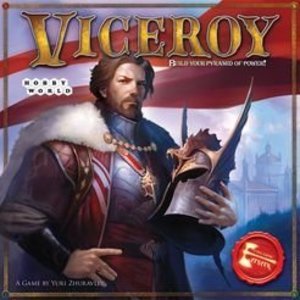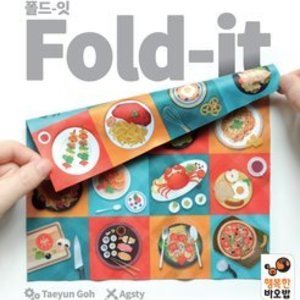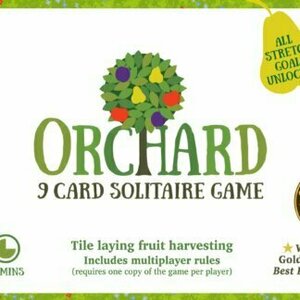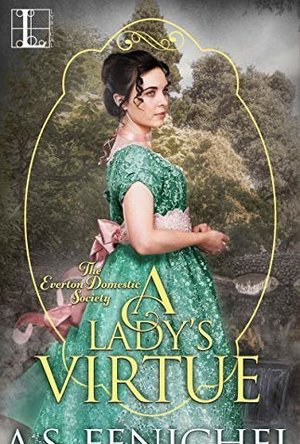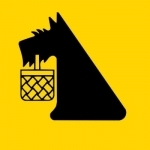Gareth von Kallenbach (980 KP) rated Thor (2011) in Movies
Aug 7, 2019
Instead of his planned coronation, Thor finds himself cast out of Asgard and forced to live as a mortal on Earth. Truly a fish out of water, the brash and arrogant Thor is befriended by scientist Jane Watson (Natalie Portman), the first person Thor encounters upon his arrival. Unsure of his true identity, Jane and her colleagues are drawn to the mysterious stranger despite his tales which, to the humans, are the stuff of ancient Norse legends.
While initially dismissed as a drifter, Thor soon gains the respect of Jane and her colleagues when he stands up to a mysterious government organization that has seized her work. Thor soon finds himself battling enemies on multiple fronts on both his present and former home where he must battle to regain his lost honor and status and prove himself the rightful leader of his people. What follows is a highly entertaining mix of action, comedy, and a touch of romance that sets the film apart from many of its peers.
Director Kenneth Branagh fleshes out the characters from their two-dimensional origins and paces the film well never allowing the elaborate effects or action sequences of the film to overshadow the characters or the story. J. Michael Straczynski used many of the lessons he learned as the creator of the Babylon 5 and in his recent work with Marvel comics to provide a character-driven story that is true to the source material while providing interweaving storylines and ever-changing characters.
The supporting cast was strong, especially Tom Hiddleston as Thor’s younger sibling Loki. The visuals of the film match the action perfectly as Asgard and some of the other realms are truly breathtaking. The only issue I had with the film was that, sadly, Paramount felt the need to use a post filming 3-D conversion on the film which in my opinion offered very little to the finished product. Had the film been shot with 3-D cameras it truly would’ve taken it to the next level but as it was actually done, the 3D conversion offers little to the visual experience.
Hemsworth commands the screen in every scene in which he appears. He is a charismatic presence that deftly walks the line between brash warrior and leader seeking redemption, who never lets his performance become cartoony or forced. I absolutely loved every part the film from beginning to end and in my opinion Thor has set the bar very high for the next series of comic book themed movies to aspire to and is not to be missed.

Category Therapy: Sorting Words by Categories
Education and Medical
App
Improve mental organization skills. Practice categories in a versatile speech therapy app. When you...

BharatMatrimony – Matrimonial
Social Networking
App
BharatMatrimony iOS app - Search Smarter! Match Faster! BharatMatrimony is the world's most trusted...
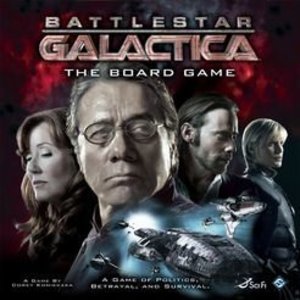
Battlestar Galactica: The Board Game
Tabletop Game
Battlestar Galactica: The Board Game is an exciting game of mistrust, intrigue, and the struggle for...
Purple Phoenix Games (2266 KP) rated Viceroy in Tabletop Games
Jun 12, 2019
Power. That’s what everyone wants, isn’t it? Well, at least it is in Viceroy! As an inhabitant of the world of Laar, you are fighting to become the ultimate ruler. Recruit allies who provide strategic advantages and enact laws that solidify your claim for power. Do you have what it takes to build and maintain a powerful kingdom, or will your attempts fall short?
DISCLAIMER: There is an expansion to this game, but we are not reviewing it at this time. Should we review it in the future we will either update this review or post a link to the new material here. -T
Viceroy, a game of card drafting and tile placement, is played over 12 turns in which players build a pyramid with their cards – paying to place each card and collecting rewards based upon which level of the pyramid a card is placed. Each turn is divided into two phases: Auction and Development. During the Auction Phase, players bid gemstones to buy a card from the auction line. Once every player has either collected 1 card from auction or passed, play moves to the Development Phase. During the Development Phase, players can either play a card into their pyramid, pass, or discard a card and take 2 gemstones from the reserve. To play a Law card into your pyramid, you place it for free. To play a Character card into your pyramid, you have to pay for it with gems. The cost is dependent upon which level of the pyramid the card is to be placed. You must pay for the level the card will sit on, as well as pay the cost for every level beneath it. For example, to add a card to the third level of the pyramid, you must pay the cost for the 3rd level, AND 2nd level, AND 1st level. The rewards gained from adding a card to the pyramid, however, are taken only for the level on which the card sits. In the earlier example, you would only get the reward for the third level alone, since that is the level on which the card sits. The Development Phase is played over 3 rounds, so a player could play up to 3 cards into their pyramid during 1 Development Phase. After the 3 rounds are up, the next turn begins again in the Auction Phase. When all cards are gone from the Auction Deck, the game ends. Players count up all of their Power Points, and the player with the highest Power value wins!
The only change in Viceroy between a group and solo game is during the Auction Phase. Obviously, if you are playing solo, there is nobody to bid against for cards. How that is alleviated is that you still bid your gemstone as normal, and you randomly draw an unused gemstone from the box as an AI bid. If the colors match, you lose your gem and go on to the next auction. If the colors do not match, you collect your choice card, and the card the AI would have collected gets discarded. If the AI color does not match an available card, you just discard one of the remaining cards. This mimics group play in the sense that you might not always get the card you want from auction! The Development Phase is played as normal. At the end of the game, count points as normal and try to beat your own high score.
Viceroy is a neat game. Every card has so many options that there is no one single strategy that is a sure-win every time. Maybe one game I’ll go for Magic tokens. And maybe the next I’ll try to go for raw Power Point tokens. The possibilities really are endless, and that keeps this game fresh for me. I don’t feel like I’m just going through the motions because every card will act differently depending on where it is played. Strategy really is everything here. On the flip-side of that, however, is that sometimes the options can be a little overwhelming. With so many possibilities for each card, it can get hard for me to decide on what strategy I really want to use. It should also be noted that a card can only be played onto a level if it can sit on exactly 2 cards on the level beneath it. So sometimes I buy a card to play on a certain level only to get to the Development Phase and realize I don’t have a legal place to which I can play it. So do I sacrifice other cards/gemstones to build a slot for this one card, or do I play it to a different level and change my strategy a bit? There’s a little bit of a learning curve, but the more I play, the better I get (or at least, the better I think I get).
Another grievance with Viceroy is that I find myself running out of cards in my hand a lot. The only opportunity to draw cards is if you play a card into your pyramid that allows you to do so. And since I’m usually focused on other strategic routes, I don’t use those cards for those purposes. So then I play all of the cards in my hand (leaving me empty-handed), get 1 card at the next auction, play it, and am again left with no cards in my hand. To fix this issue, I wish one of the actions you could take during the Development Phase was to draw 1 card. I’m not sure if other people have this issue, or if it’s just me, but it’s a problem I run into almost every game.
Overall, I think Viceroy is a good game. It’s unique in the sense that there are so many possibilities that you’ll probably never play the same game twice, even if you decide to play by the same strategy. The mechanics and gameplay are cool too – it’s fun to watch your pyramid literally grow in front of you as the game progresses. This game takes a little more focus and thought than you might think, so it’s not one I’d necessarily just pull out for some light fun. I think Viceroy is as exciting as a solo game as it is as a group game since there really aren’t any differences between the two settings. If you like Viceroy, give it a try solo! If you’ve never played Viceroy, try it either solo or in a group – it’s the same game after all!
https://purplephoenixgames.wordpress.com/2019/04/18/solo-chronicles-viceroy/
Purple Phoenix Games (2266 KP) rated Fold-it in Tabletop Games
Dec 28, 2021
Fold-It is a real-time dexterity puzzle game in which players are trying to fold their Recipe Cloth to match the current Order Card. Setup is simple – give each player a Recipe Cloth and 3 Star Tokens. Choose whether you want to play with the Basic or Advanced Order Cards (or a mix of both types) and shuffle the deck. Place a number of Fold-It tokens in the middle of the table to equal one fewer token than number of players. The game is now ready to begin!
Played over a series of rounds, players will be racing to complete the current Order Card the fastest. How? By folding their Recipe Cloth! Each Recipe Cloth is printed with a 4×4 grid of different dishes. The Order Cards each show a combination of 1-4 dishes. When an Order Card is revealed, all players will then try to fold and arrange their Recipe Cloth so that only the dishes from the Order Card are displayed. You can fold your cloth horizontally or vertically along the columns, and the cloth is double-sided to help accomplish your goal as well. Once you have folded your Recipe Cloth so that the dishes match the Order Card, grab one of the Fold-It tokens from the center of the table. When all the Fold-It tokens have been claimed, check each completed Recipe Cloth to verify that it is correct. If your Recipe Cloth matches, then you are in the clear! But if you made a mistake and had grabbed a Fold-It token, lose one of your Star tokens. *womp womp* The remaining player who was not able to grab a Fold-It token in the round discards one of their 3 Star tokens as well. The round is now over, and a new round begins by revealing the next Order Card. Play continues in this fashion until only one player remains with Star tokens. That player is declared the winner!
I have to admit that Fold-It surprised me, in a good way. I picked it up from a “Buy, Sell, Trade” Facebook group and really wasn’t expecting much from the gameplay. But when I actually got it to the table, I had a blast with it! The theme is cute, the gameplay is quirky, and it’s actually trickier than it looks. Some of the orders require you to fold the cloth in unique ways, and it can kind of be a brain burner. Add in the real-time racing element, and you’ve got an exciting game on your hands. Is it the most amazing and strategic game that I’ve ever played? No. But it’s pretty engaging for a light and fast filler game.
The components are pretty straight-forward. Cardboard tokens, nice sturdy cards, and actual cloth for the Recipe Cloth. The artwork is colorful and cute, and the tokens and cards will withstand many plays. I do especially like the Recipe Cloths too. The fact that they are actual cloth means that you won’t be worried about creasing issues from constant folding and unfolding between rounds and games. The cloths are double-sided as well to give you a boost for strategy as well. I will point out that all cloths are printed the exact same way, so it’s not like a Bingo board that varies between players. Everyone has the same tools with which to work each round, and everyone is on an even playing field that way. Nice components overall, in my opinion!
All in all, am I happy with my Fold-It purchase? Yes. It’s a quirky little filler game that is engaging and entertaining for all players. Yeah, there’s a player elimination element, but the game overall is so fast that the eliminated player(s) won’t be sitting around for long. Who knew that folding a piece of cloth could get your heart racing so fast? Fold-It is definitely a game that I’ll pull out when I need something quick and simple, or with which I can introduce people to the hobby. I guess if you play it too much, it would get kind of stale, but I don’t see that happening for me. Purple Phoenix Games gives this one a tasty 4 / 6.
Purple Phoenix Games (2266 KP) rated Orchard: A 9 Card Solitaire Game in Tabletop Games
Mar 1, 2022
Orchard: A 9 Card Solitaire Game (simply Orchard from here on out) is a solo game where the player is attempting to harvest the most fruit from trees that are bred for high yield. As there are no players to play against, the player will instead compare their ending score with a table in the rulebook. Will the player’s game result in a “Pal-tree” score or will they score enough to be considered “Almost imposs-apple!”?
To setup, place the dice and Rotten Fruiteeple on the table. Shuffle the 18 cards, deal two decks of nine cards (two games worth), and choose a deck to play. Flip the first card over to start the orchard, shuffle the remaining cards and draw two into hand. The game is now setup and ready to begin!
Turns in Orchard could not be simpler: Play a Card, Place Dice, Draw a Card. From the two-card hand, choose one to be placed in the orchard with one very important rule: the newly-placed card must overlap another card in the orchard by overlapping matching tree types. So, a card can only be placed if the apple tree overlaps an apple tree, etc. More than one icon may overlap the existing card, but each icon must match types below it.
Once the new card has been placed, for each icon overlapped, a die matching the fruit type is placed on the icon. If this is the first time the tree has been overlapped, the die face is placed with value 1 showing. However, the die will increase in value each subsequent time it is overlapped (total die values of 1, 3, 6, 10). Therefore, when a card has been overlapped four times on the same icon, the maximum number of points has been reached for that icon. Should a player wish instead to forego any die placement and be unable (or unwilling) to place a card correctly, they may place any card, overlap an icon, and then add a Rotten Fruiteeple atop the mismatched icon. This spoils the fruit for the remainder of the game, so no further dice may be placed upon it, and also reduces the final score by three VP at game end for each token placed.
Finally, when the card and die have been placed, the player draws another card into their hand. When the final card has been played, or no further legal placements can be made, the game ends and the player totals up the dice values to arrive at their final score.
Components. This game is 18 cards of good quality, a bunch of custom dice, and two Rotten Fruit meeples. Everything is good quality and size, and it fits into a really cool sliding deck-box. The art, for me, is fine. The colors match fruits from the real world, and the dice match those color well enough too. I feel like different fruit choices could have been made to increase accessibility for our color-blind gamer friends. The plums and apples are both small and round (with an ever-so-slight different shape on the apple). I don’t know what other fruits would have been more appropriate – I’m not a botanist. Similarly, the dice are custom made with the pips looking like a plum or apple, and two sides of the dice showing a leaf icon. Perhaps in the interest of differentiation, instead of the leaves, the different dice colors could instead show the matching fruit style (if only the plum and apple looked differently enough). So instead of leaves, the red dice could show apples, the yellow dice could show pears, and the purple dice could show, I don’t know, eggplants? I am not color-blind, so these do not affect me, but it is something I have taken to commenting on as I review more and more games.
All in all, Orchard is a really good little game of overlapping and puzzling out next moves. The games are super-quick and engaging, and I always want to improve my score each time I play. When a game forces me to play again and again I feel it is a sign of a good game. I have plans to keep this one in its own special place where I can just grab it and go, instead of being dwarfed by my collection of much larger game boxes. If you are like me and pine for good solo play, then perhaps you should check out Orchard: A 9 Card Solitaire Game. The rules are light, game play is simple and fast, and it keeps drawing me in every time I look at the box.
Also let me know your highest score because I apparently am trash at this game, even though I really enjoy playing it. Have you scored in the top tier? Those must be some delicious fruits.
Billie Wichkan (118 KP) rated A Lady's Virtue (Everton Domestic Society, #3) in Books
May 22, 2019
Sylvia Dowder had almost made it to the altar when her fiancé unexpectedly became a viscount, and dropped her like a stale crumpet to make a more "suitable" match. Though Sylvia's heart has been crushed, her spirit has not. She puts her wits and social savvy to use as a secret gossip columnistand as the Everton Domestic Society's party planner to the ton. Luckily, she's not in danger of ever falling for an aristocrat again
Especially not one like Anthony Braighton, Earl of Grafton. Raised in America, Anthony sees no reason to marry when he can enjoy all the perks of being an eligible earl. Determined to convince his family he doesn't need a wife, he hires Sylvia to act as hostess and decorator for upcoming parties. Yet Sylvia is as adept at captivating his interest as she is at beautifying his home. And despite this Everton lady's aversion to titled men, some attractions can't be deniedand love rarely does go where it's told.
A Lady's Virtue by A.S. Fenichel is book Three in the Everton Domestic Society Series. This is the story of Sylvia Dowder and Anthony Braighton, Earl of Grafton. This can be a standalone book.
This is an enjoyable addition to the Everton Domestic Society series. Everton is an employment agency of sorts. They provide ladies to perform tasks such as introducing a debutant to society, planning events, matchmaking, etc. for their clients. All of the proprieties are met and the ladies are provided with chaperones, transportation, etc. during the performance of their tasks. They also live at Everton House.
Sylvia Dowder is the Everton Domestic Society's party planner to the ton. She has decided never to marry after having endured a scandal 3 weeks before she was to marry, being told by her fiancé that she wasn't good enough for him now that he had a title.
Anthony Braighton, Earl of Grafton, hires Sylvia to redecorate his homes, as well as to plan a ball and be his hostess. He has also decided that he's too young to marry and wants to enjoy life and travel with no attachments.
I absolutely loved these characters and they even had some fun banter between them. The writing was exactly what I wanted; shifting perspectives done right.
I thoroughly enjoyed this book. Lady Sylvia is talented, spunky and will take no nonsense from anyone. She befuddles the new Earl, but also intrigues him.
Highly recommend reading!
I received an ARC download of this story via NetGalley and this is a voluntary review.

Banyan Tales - Adventure Series & Morals for Kids
Education and Book
App
Get BanyanTales, the best socio-emotional learning app for children up to 8 years old, and watch...

